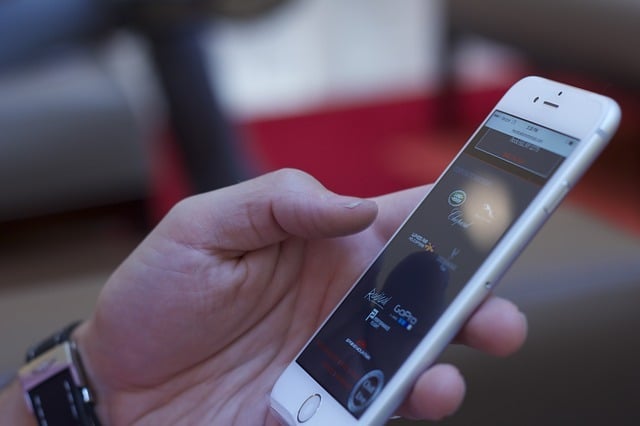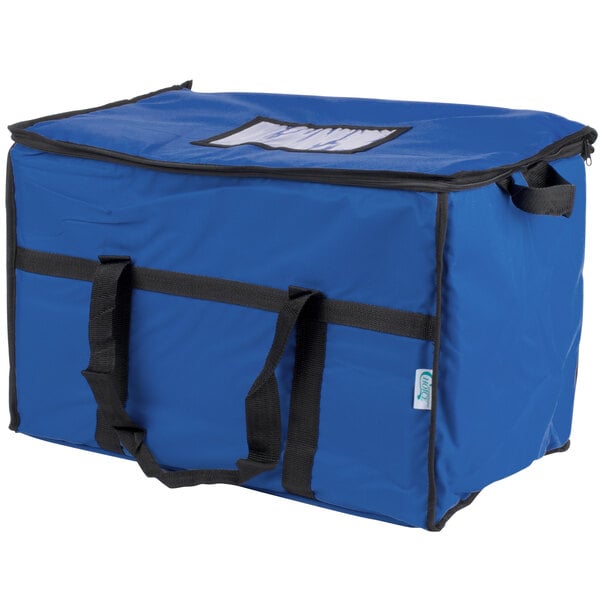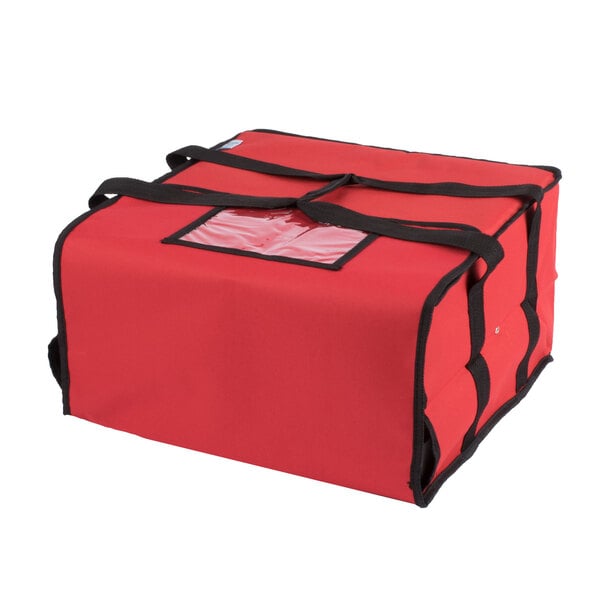How to Set Up Your Own Delivery Service For Your Restaurant

Food take-out and delivery services are two of the fastest growing segments of the restaurant industry and are responsible for over $70 billion in sales each year. Studies also show that revenue from food delivery could reach $75 billion by 2020. Additionally, third-party food delivery is predicted to represent 40% of total delivery revenue by 2020, which is an increase of 15% from 2016. If you’re interested in employing a restaurant delivery service, one of the first decisions you’ll need to make is whether you should use a third party company or build your own team. Keep reading to learn more about this growing field and to choose the right service for you!
How Are Delivery Services Impacting the Foodservice Industry?
Wondering why online restaurant delivery service has become so popular among consumers? To start, these services are incredibly convenient because they allow consumers to order from home or work without having to travel. Additionally, these services encourage people to browse menus of restaurants they hadn’t heard of previously and can also lead to them trying new businesses and cuisines.

According to several studies, as third-party delivery continues to grow, it will have a positive impact on the sales and profits of businesses that adopt it. On the other hand, many experts believe refusing to incorporate delivery will negatively affect foodservice businesses. Dining is a $780 billion-plus industry in the United States, so delivery is sure to have a profound and lasting impact upon thousands of establishments.
As delivery continues to grow in popularity, consumers are also beginning to feel more comfortable with branching out from old take-out standbys like pizza and Chinese food. Studies also show that 20% of individuals are willing to order menu items like burgers, fries, and sandwiches that they may have avoided choosing in the past due to concerns that food would arrive cold.
Items You Need When Starting a Delivery Service
If you decide to start an in-house delivery service, be sure to stock up on these insulated food delivery bagsand take-out containers:



You’ll also need items like delivery service supplies, including insulated food carriers for catered events and take-out and delivery containers for your convenience store, restaurant, or to-go business. Additionally, you can stock your pizzeria or restaurant with pizza boxes, stackers, pans, and individually wrapped plastic cutlery sets.
Why Should Your Restaurant Offer Delivery Services?
If you’re looking to boost your sales, adding delivery service to your restaurant will help you distinguish yourself from the competition – or at least keep up with them. Keep in mind that delivery will only grow your brand if you already have market presence and a loyal customer base. Potential customers can’t order from you if they’ve never heard your name. Once you’re on the delivery circuit, though, you’ll be available to customers who may not have tried your food before, which can lead to increased profits.
Before jumping onto the delivery bandwagon, though, you should ask yourself whether it will work for your business model. Delivery doesn’t usually suit fine dining restaurants, for example, and you should also avoid it if your cuisine won’t hold up well during delivery. The last thing you want to do is turn your customers off by providing them with sub-par delivery food.
Use Delivery Services to Attract Millennial Consumers
Using in-house or third-party delivery services at your restaurant is also an excellent way to attract more Millennial (or Generation Y) customers. According to the 2015 census, there are currently over 75 million Millennials in the United States (people now aged between 18 and 34), making them an extremely important demographic. Members of Generation Y value convenience and instant accessibility over cost, so they’re a goldmine for restaurants with delivery services.
One important thing to remember about your Generation Y customers is that they’re probably not loyal to any one third-party delivery service. So, you may want to look into using more than one delivery service. Accordingly, you shouldn’t sign any contracts that have exclusivity clauses. If possible, try to partner with delivery platforms that provide customers with the ability to earn rewards and points, as this is also something Millennials are actively seeking as they make their ordering decisions.
What Are the Potential Disadvantages of Partnering with Third-Party Delivery Companies like DoorDash, UberEats, GrubHub, Postmates, Favor, etc?
While hiring a third-party delivery service is intended to increase your business’s profits, there are important liability issues to consider. In addition to third-party drivers becoming involved in automobile accidents, there’s also a chance that customers could develop foodbourne illnesses from meals that have sat in a car for too long. Because your restaurant isn’t directly responsible for these issues, you need to be prepared to protect your business.
To minimize your risk, you’ll want to draw up written partnership agreements with all of the delivery services you work with. Include the following provisions in these documents:
- Require that delivery companies comply with industry standards for safe food handling (including temperature maintenance). Similarly, choose services that use GPS tracking to fully establish responsibility in case of foodbourne illnesses.
- Require delivery drivers to provide proof of insurance and clear vehicle ownership.
- Include specific language that shifts full responsibility for any issues in transit onto the third-party service.
- Require the delivery company to have insurance coverage that names the specific businesses they’re partnered with.
- Include specific disclaimer language in delivery menus, paper ads, and on your website to anticipate potential customer concerns and complaints.
Regardless of the precautions you take, chances are that the majority of your customers (around 76% according to studies) will hold your business at least partially responsible for issues with their orders. Accordingly, you’ll need to decide whether you’re adequately equipped to handle these dissatisfied consumers. If you can’t address every problem quickly and effectively, third-party delivery may not be right for your establishment.
Additionally, you should make sure your business isn’t inadvertently engaging with unauthorized third-party delivery services without your knowledge. Because companies like Postmates call in or place orders online for customers and then pick them up (cutting the consumer entirely out of the ordering process), you may not even know your restaurant is interfacing with a delivery service. This doesn’t mean you shouldn’t use Postmates, but rather reinforces that you must have contracts and partnership agreements drawn up before utilizing any third-party service.
Ultimately, you need to make it clear to the third-party delivery company that they’re responsible for representing your brand and should act accordingly. Similarly, ensure that their mission and goals are in line with your own in order to present a unified image. Finally, remember that reviews can make or break your business, so it’s important that the company you’ve partnered with and the service they provide is polished, professional, and virtually error free.
What Are the Benefits of Building an In-House Delivery Team?
Wondering how to start a restaurant delivery service at your establishment? If you have the time and money to train and build an in-house delivery team, you should consider this option before going straight to a third-party service. Two examples of well-known companies that use this delivery model are Starbucks and Panera Bread.

One of the main benefits of creating a delivery service for your restaurant is that it eliminates the chance that consumers may think of the delivery service before your business. You’ll also increase brand loyalty and visibility and ensure you won’t be overshadowed by the big third-party services that your competitors may be employing.
According to recent studies, 76% of consumers revealed that they prefer to order directly from the restaurant of their choice, rather than through third-party services. On average, maintaining your own delivery team is also 46%-50% cheaper than employing the services of third parties. This will also boost your revenue, since you’re collecting 100% of the profits from each meal served.
Finally, making the choice to build your own delivery team provides your business with complete control over the consumer’s dining experience, from ordering and meal preparation to delivery and payment. Your trusted employees will also be the ones interfacing with customers, rather than the unknown staff of third-party companies.
What Are the Potential Disadvantages of Building an In-House Delivery Team?
While there are a number of benefits to creating and maintaining your own delivery team, doing so isn’t practical or feasible for every restaurant. If you run a small business, chances are you don’t want to spend the extra money on in-house delivery staff. Similarly, if you shop around for services, you’re likely to find a third-party company with a low commission that will help your small company’s bottom line and raise your profit margins.
From family restaurants and coffee shops to convenience stores and markets, more and more establishments are turning to delivery. As convenience becomes increasingly important to consumers, companies who provide delivery and to-go services will continue to grow in popularity. If you decide to incorporate food delivery into your business, the most important decision you’ll have to make is whether to use a third-party service or build your own team in house. No matter what you choose, skillfully utilizing delivery can help build your brand visibility while simultaneously boosting your revenue.

 Previous Post
Previous Post Next Post
Next Post